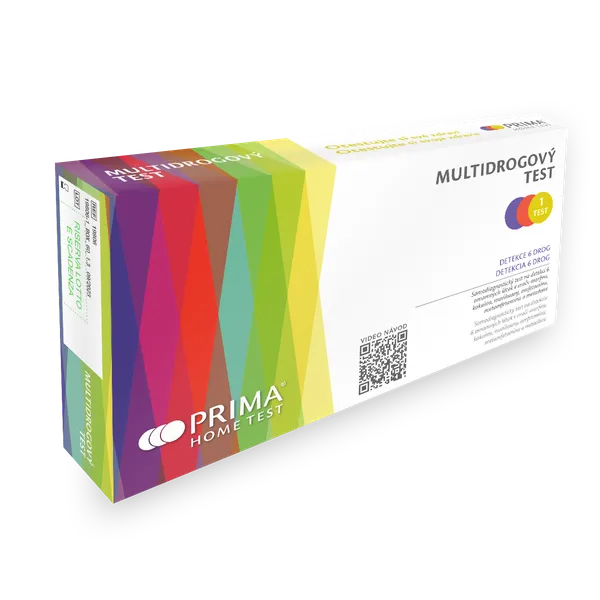Prima Home
Prima Home Multidrug home test 1 pc
Prima Home Multidrug home test 1 pc
Couldn't load pickup availability
The self-diagnostic test for the detection of 6 narcotic substances in urine: morphine, cocaine, marijuana, amphetamine, methamphetamine and methadone will give you the result in just 5 minutes . This rapid screening test is performed from a urine sample , and is evaluated without the use of a device. The test uses monoclonal antibodies to selectively detect elevated levels of specific drugs in urine. Due to the speed and sensitivity of immunochemical methods, these methods are currently the main way of detecting drug use.
How does it work?
During testing, the urine sample rises due to capillary forces. The drug, if present in the urine sample below the threshold value, will not saturate the binding sites of its specific antibody. on the test strip in the drug-specific area of the test The antibody then reacts with the drug-protein conjugate, and a visible colored line forms . When the drug concentration is above the threshold value, it saturates all binding sites of the antibody. in the test area Therefore, no colored line is created . Thus, a drug-positive urine sample will not produce a colored line on the test strip for that drug because there is drug competition, while a drug-negative urine sample will produce a line in the test area because there is no drug competition.
How accurate is the test:
- amphetamine (AMP1000) threshold value 1000 ng/ml blood presence time 4 to 24 hours
- cocaine (COC300) border concentration 300ng/ml blood presence time 24 to 48 hours
- marijuana limit value 50ng/ml duration of presence in blood 3 to 10 days
- methadone (MTD300) cut-off value 300ng/ml blood presence time 3 to 5 days
- methamphetamine (MET500) threshold value 500ng/ml blood presence time 2 to 4 days
- morphine (MOP300) limit value 300ng/ml blood presence time 3 to 5 days
Use
The multidrug test provides only a qualitative, preliminary analytical result . It may happen that technical or procedural errors as well as interfering substances in the urine sample can cause erroneous results. A positive result does not mean a level or intoxication or concentration in the urine. A negative result does not necessarily mean drug-free urine. A negative result can also be shown when the drug is present, but is below the detection limit of the test. This test cannot distinguish between drug use and certain medications.
Share


